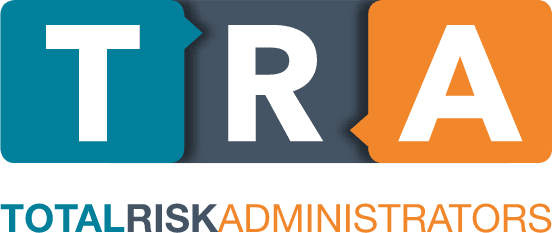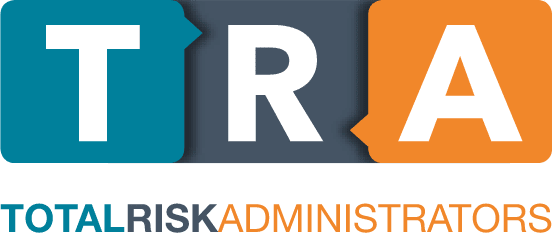Understanding medical aid tariffs and what “above-tariff” means is crucial for every medical aid member in South Africa. Medical aid tariff refers to the predetermined rates that medical aid schemes pay for specific medical procedures and treatments. When specialists charge above these tariff rates, members face unexpected medical bills unless they have gap cover protection from an authorised financial services provider.
What Is Medical Aid Tariff?
A medical aid tariff is the predetermined rate schedule that medical schemes use to reimburse healthcare providers for medical services. These medical scheme rates are set by each medical scheme and represent the maximum amount your medical aid pays for specific procedures, consultations, and treatments.
Medical aid schemes establish these rates to control costs and ensure consistent pricing across their network. However, medical aid rates often fall below what healthcare providers actually charge for their services, creating a self-payment gap that affects medical aid members.
Understanding “Above-tariff” Charges
Above-tariff means healthcare providers charge more than what your medical scheme is willing to pay according to their tariff schedule. This creates a shortfall between the medical aid tariff and the actual cost of treatment.
For example, if your medical scheme tariff allows R1,000 for a specialist consultation, but the specialist charges R2,500, you face an above-tariff shortfall of R1,500 that becomes your responsibility to pay.
Why Do Healthcare Providers Charge Above-tariff?
Healthcare providers charge above medical aid tariff rates for several reasons:
- Rising Healthcare Costs
Medical equipment, facility costs, and specialist training expenses continue increasing faster than medical scheme tariff adjustments. Providers must cover these operational costs to maintain quality healthcare services.
- Specialist Expertise
Highly qualified specialists often charge premium rates reflecting their advanced training, experience, and expertise. Medical aid tariff rates may not adequately compensate for this specialised knowledge.
- Private Healthcare Standards
Private hospital facilities and premium medical services require higher fees to maintain their standards. Medical aid tariff schedules often don’t reflect these enhanced service levels.
Co-payments Are Additional To Shortfalls
Beyond the basic above-tariff charges, medical aid members should be aware of co-payments for certain procedures, which are in addition to the above-tariff charges.
The Financial Impact of Above-Tariff Charges
Above-tariff medical expenses can create substantial financial stress for families. Without proper planning, these unexpected medical bills can:
- Drain emergency savings accounts
- Force families into debt
- Delay necessary medical treatment
- Create ongoing financial pressure
Medical aid members who pay monthly premium contributions often assume they’re fully covered, making above-tariff shortfalls particularly shocking when they occur. These medical shortfalls require additional financial protection through gap cover policies.
How Gap Cover Protects Against Above-Tariff Costs
Gap cover provides essential financial protection against above-tariff medical expenses. This is for mostly in-hospital expenses though, not your day-to-day benefits. Ensure you look at the product-specific details and T’s and C’s surrounding this. This specialised insurance bridges the gap between medical aid tariff rates and actual healthcare costs, ensuring you can submit legitimate claims for medical expense shortfalls.
TRA’s Gap Cover Solutions
Total Risk Administrators offers comprehensive gap cover protection with coverage up to 700% above medical aid tariff rates:
Basic Cover 300 – Covers up to 300% above the medical scheme tariff from R99 per month, including casualty benefits and basic oncology treatment coverage.
Vital Cover Plus – Provides up to 700% coverage with co-payment benefits from R360 per month, covering medical scheme membership shortfalls.
Super Cover Plus – Comprehensive 700% coverage with enhanced oncology treatment and dental reconstruction from R380 per month.
Absolute Cover Plus – Premium 700% protection with unlimited oncology treatment benefits from R620 per month.
Planning for Above-tariff Medical Expenses
Medical aid members take proactive steps to manage above-tariff costs:
Get Gap Cover
Sign up for Gap Cover, a supplementary health insurance product to ensure your medical aid shortfalls and co-payments are covered.
Emergency Medical Savings
Maintain a dedicated savings account for unexpected medical expenses, including the maximum amount you might incur for procedures.
Regular Policy Reviews
Annual reviews of your medical aid and gap cover policies ensure adequate protection. Review your brochure materials and policy documents to stay current with benefits.
Family Healthcare Planning
Consider your family’s age-related health considerations and potential specialist treatments when selecting both medical aid plans and gap cover protection levels.
Waiting Periods and Above-Tariff Coverage
Gap cover policies include waiting periods for specific conditions.
Most policies include a general waiting period, though TRA does not apply a general waiting period, only condition-specific waiting periods.
As a licensed FSP, TRA provides immediate benefits for accidents and emergency treatment.
Protecting Yourself from Above-Tariff Surprises With TRA
Medical aid tariff shortfalls represent a significant financial risk for South African families. Understanding what above-tariff means and how medical aid tariff systems work empowers informed decisions about healthcare financing.
With proper gap cover protection from TRA, you can access quality healthcare without fear of unexpected above-tariff medical bills.
Contact us today to discover how we can help you achieve peace of mind.
Frequently Asked Questions
What does a 100% scheme tariff mean?
100% scheme tariff means your medical aid will pay the full amount according to their predetermined tariff rates. However, if healthcare providers charge above these tariff rates, you’ll still face shortfalls that require gap cover protection. This is where 300%, 500%, and 700% above tariff matters.
What is a medical aid rate?
A medical aid rate (also called tariff rate) is the predetermined fixed amount that your medical scheme will pay for specific medical procedures, consultations, or treatments. However, healthcare providers are not required to charge according to the rate; therefore, if you encounter a higher fee, you are responsible for paying the difference. This is known as a co-payment or shortfall.
What is Gap Cover for medical aid?
Gap Cover for medical aid is supplementary insurance that covers the difference between what your medical aid pays (according to their tariff) and what healthcare providers actually charge. TRA offers gap cover with up to 700% coverage above medical aid tariff rates.
Which is the best medical Gap Cover in South Africa?
TRA is consistently ranked among the top gap cover providers in South Africa. TRA offers four comprehensive plans, starting from R99 per month, with coverage up to 700% above medical aid tariff rates, fast claims processing, and additional benefits such as travel insurance and TRA Assist services.
What is the waiting period for Gap Cover?
TRA gap cover has no general waiting period for most claims. However, specific waiting periods apply to certain conditions: 10 months for procedures such as joint replacement and pregnancy, 6 months for pre-existing conditions, and 9 months for a cancer diagnosis if diagnosed before joining. Accidents and emergency treatment are covered immediately.




